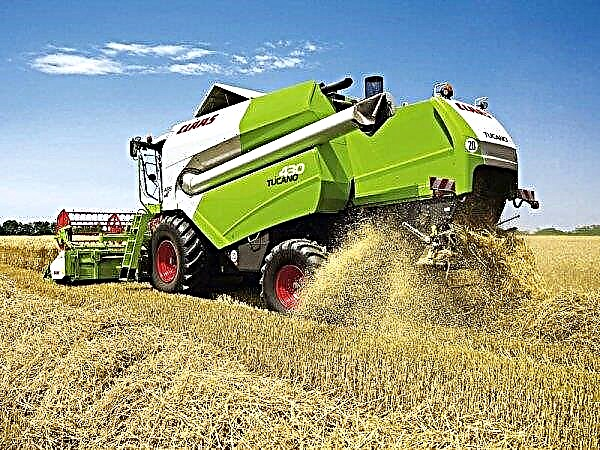When the apiary begins to grow, the beekeeper needs to decide how best to organize its maintenance. The most modern type of hives used in a large apiary is a cassette. Mobile bee pavilions, formed from several hives, have a number of obvious advantages. About how to create this design with your own hands according to the drawings and how to work with it, read further in the review.
Pros and cons of cassette beekeeping
The cassette system is an indoor pavilion. It can be stationary or placed in a trailer to the car. The second is convenient to transport and place closer to flowering honey plants. This allows you to significantly increase bribes.
The pavilion is divided into compartments. In each of them, as in an ordinary hive, strips are attached to which cassettes are installed that perform the same function as the housing of a normal dwelling for bees. The cartridge can be designed for 8, 10 or 12 frames. You can complete the design for frames of any size. The distance between the walls of the cassette and the height of the mounting strips depend on the size of the frames used.

On the outer wall of the cassette made ventilation holes and tap holes. The wall that is inside the pavilion structure can be separate from each cassette or common. The second type is convenient if you need to conduct simultaneous prophylaxis of varroatosis or assess the condition of bee colonies.
- Advantages of the cassette-type pavilion:
- no need to build a winter house: due to the microclimate that is created in the pavilion, bees are quite comfortable in maintaining temperature and winter well;
- convenient for storing additional photo frames or equipment, for which the upper part of the structure can be used;
- easy to move and transport the entire apiary at the same time;
- economically consumes space for installing an apiary;
- allows to increase the volume of honey collection;
- allows you to maintain a more comfortable microclimate for bees;
- allows the bee colony to grow faster;
- reduces the risk of swarming;
- facilitates apiary maintenance and bee care.
Types of cassette pavilions
Cassette pavilions may not have many design differences. They are divided into stationary and mobile. Minor differences are the size, the material from which they are made, the presence of heating, lighting and design features of the cassettes.
Did you know? Cassette hives made of wood and soaked in wax show a lower incidence of bees than other types of structures.
Any type of construction should be placed with the long side to the southwest or southeast. The roof is single-pitched or gable. The second is more convenient, since in winter it does not accumulate snow. A distinctive feature of the stationary building is that it is installed on the foundation. And mobile is that it is installed on the chassis.
Mobile
The mobile pavilion is a house in which there are 2 rows of hives (cassettes), united by a common roof. On the inside between the hives there is a passage for serving the apiary. The design is mounted on the chassis. It can be a trailer from a car, in which they keep the bottom and chassis, remove the sides and make a frame (frame) on which the entire pavilion will be mounted. In order for the structure to be stable, it will be mounted on a welded frame. Sheathing is made of chipboard or other materials.

Stationary
Stationary cassette design in functionality is no different from mobile. But it is installed on the foundation. The advantages of a stationary building is that it can organize lighting, plumbing and heating for heating in winter. This is a definite plus in regions with frosty winters. Communications facilitate maintenance of the apiary: plumbing, heating, electricity.
Important! Hives from aspen and linden in winter require mandatory additional insulation.
It can also provide side windows. For bees, lighting the corridor between the hives is optional, but it helps the beekeeper to work with cassettes. Here you can also organize good air exchange and equip a place to store frames and other equipment.

DIY cassette pavilion construction
The construction of a cassette for the bees is similar to how you would build a barn. If you have decided on the main question: will it be stationary or cassette, then you will need to draw up a drawing. The next step is to calculate the amount of required materials and think through the nuances. Then establish the foundation, create a frame, sheathe it with a board or other materials. Also equip windows, roof, door, finish work on the utility room.
Partitions are installed inside, dividing the room into compartments. In each of them place cartridges. For the trailer, their total number will be no more than 60. The size of the cassette module is taken based on the size of the frame. For example, 450 x 300 mm.
 The cassette module is a multi-hive structure in its structure. Cassettes with frames are installed inside. They rely on cassettes
The cassette module is a multi-hive structure in its structure. Cassettes with frames are installed inside. They rely on cassettes
Each cassette is a box. Inside the drawer there are guides for the frames. A front hole is made on the front panel. The back wall is a removable panel on latches. The upper part of the cassette is limited by a sheet of plywood - ceiling.
Necessary tools and materials
To build a mobile pavilion, you need a car trailer, and for a stationary one, the foundation on which it will be installed.
Of the tools needed:
- welding machine for welding the frame;
- saw on wood;
- hacksaw;
- jigsaw;
- measuring instruments;
- drill / driver;
- hammer.
Did you know? Polyurethane has excellent thermal insulation properties. However, it does not rot, does not secrete fungus and does not allow moisture to pass through. It is also not damaged by insects or mice. But he needs good ventilation, as he does not allow air to pass through.
Of the materials needed:
- boards;
- Chipboard;
- slate and roofing material for the roof;
- cement, crushed stone and sand for the foundation of a stationary structure;
- nails, screws;
- Styrofoam;
- roofing or nylon mesh with cells from 2.5 to 3 mm.
Blueprints
In one section about 6-7 departments are located. Internal dimensions are taken equal to the size of the frames. For example, 450 x 375 x 240 mm. One cassette includes 8 or 10 frames. The tolerance is 5 mm. It is provided in order to make it convenient to remove and set the frames.. Wall thickness - 25 or 35 mm. They are connected in a straight spike or with the help of screws. Connection in a thorn avoids distortions. Folds may be provided for connecting the elements together.

The design is preferably performed from whole boards. They are machined to a precise size. It is permissible to use softwood: linden, aspen, pine. Larch is unusable due to its fragility. When dried, it may crack.
In the walls of the cassettes, folds are made for the shoulders of the frames. Width - 11 mm, depth - 17 mm. To work with the wall inside the pavilion, you can provide handles. Outlets should be drilled from the outside. There may be 1 or 2.
Basic principles of installation work
The main installation requirements are not many:
- fire safety, as the building is made of dry wood;
- heat insulation and moisture protection.
When calculating the dimensions, consider the convenience for the beekeeper. The height of the structure should allow free movement without bending. And the passage between the two sections should be at least 0.5 m, for a convenient turn of a person with inventory or frames.
Video: DIY Pavilion for bees
The sequence of work will be as follows:
- Installation of the frame.
- The formation of individual compartments.
- Installation of lighting.
- Installation of insulation and cladding.
Compartments are placed in one direction. The lighting is dimmed so that it is enough for the beekeeper to inspect the cassettes. In the room you can also place cabinets for inventory or a change house.
Important! Provide a folding table in the pavilion for working with cassettes and frames.
Frame manufacturing
When assembling the mobile version of the pavilion, a trailer for a car is used. Its bottom is a welded metal structure. It is laid on the floor of the board. In the front of this platform is a drawbar that allows you to mount it to the car during transportation. The main frame is made of metal. It is structurally reminiscent of a house, which has metal construction sites connected by metal belts. The roof of the structure is also a metal frame with subsequent cladding.

The back of the frame along with the door can be thrown down when you need to go inside. In motion, it is fixed by constipation. You can also execute it in a sliding format on the principle of a sliding wardrobe. The length of the trailer is 10 m. To calculate the number of sections, consider the width of your frames.
To ensure the immobility of the sections, they can be attached to the metal bottom of the trailer. If the frame is made of wood, then take a bar 6 x 7 cm under the supports. Vertical supports sheathe a board or chipboard. To avoid contact of wood with moisture, wooden elements are painted over. Sheathing with roofing material will help create moisture protection.
As a heater, foam, hardboard or other materials can be used. Inside the pavilion, you can use chipboard plates for the manufacture of partitions. The internal partitions between the sections can be made of polystyrene foam or sew it to insulate the hives.
Roof construction
The roof is made of boards. You can provide only a roof or install it with an attic. Use foam to cover. It serves as thermal insulation with noise reduction effect. The roof is covered with roofing material and sheet metal or slate.
Layout of sections and feeders
For mounting sections (cassettes) on vertical racks, wooden blocks are mounted on which these sections will be installed. Each of them is a box under the frame, which consists of 2 side walls, front and rear walls and the bottom.
Important! There should be 10 mm of clearance between the cassette and any wall. If the gap is reduced, then the bees will close it with propolis, and removing the cassette will be difficult, but if you increase it, they begin to build a honeycomb there.
Such a box will be pulled out along the rails that are packed on the frame racks. In the front part of the structure, air holes are made. Diameter - 2.5 mm. From below place a flying slot. Length - 12 mm.
The outer walls are waxed. It is the safest for insects and does not contain harmful substances. One cabinet is enough to contain one bee family. If you insert a piece of plywood into the grooves, you can divide the house vertically into 2 families. They assemble parts on the screws in order to make it convenient to disconnect them if repairs are required. Around the perimeter of the cartridge, it is desirable to fill the seal so that it provides tightness.
The back wall must be removable. Air vents are made on it and tightened with a mesh. If you make a viewing window tightened with a grid, then you can inspect the section without opening or disturbing the bees. On its internal or external parts, a layer of thermal insulation is replaced. The gap between the cassettes and the ventilation openings ensure a stable air temperature.
In the upper part of the cassette make ceiling. It can be inserted into the grooves, which are provided on the sides of the main body. On each section you can place a feeder.
Ventilation
Ventilation is provided by conventional ventilation through windows or doors. Section vents help air exchange. You can also install 2 pipes in the roof by organizing supply and exhaust ventilation. This will help to create a constant air exchange if you do not provide for windows in the construction of the pavilion.

Thermal insulation in the pavilion for bees
Bees are perfectly adapted to the temperatures inside the wood cavity. After all, they have been living like this for several million years. The side walls of individual wood cavities with an average wall thickness of more than 30 cm have a heat transfer resistance of at least 2.045 m²K / W. This value even complies with the thermal insulation standards for residential buildings.
Did you know? Hives are preferably painted white. Bees remember it better. It is also important that the white color reflects the sun's rays and does not allow the structure to overheat in summer.
In addition, honeycomb structures themselves are heat insulators. therefore insulate the hive not so much because of the temperature regime, but because of the fight against humidity and temperature extremes.
The thermal insulation of thin-walled bee hives is many times lower than that of tree cavities. To strengthen the insulating properties, the structure is sheathed with insulating materials. It can be polystyrene or other material.

Production of a mobile beekeeper "Berendey"
The Berendey Pavilion can be stationary and mobile. In any case, its basis will be a welded structure. The type of channel used for it is 120 mm. For the legs of a stationary model, pipes are taken. Support plates are sheet metal. The frame must be painted to protect against moisture. A wooden floor is laid on a metal base. Thickness - 40-50 mm.
The frame is made of timber measuring 60 x 70 mm. The pavilion covering is a board. Mandatory waterproofing roofing material for walls, and for floor and ceiling. The insulation layer must be at least 10 cm. The roof must be sheathed with metal.

The compartments themselves are separated by sheets of chipboard. Inside, grooves are provided for placing horizontal partitions. Be sure to have a mesh between the compartments so that the bees from different families do not mix. Cassettes are mounted on rails. Depth and other parameters of cartridges depend on the frames and their number. Additionally, a folding table is provided inside. It is needed to organize the maintenance of the apiary: work with frames and cassettes.
Video: Cassettes for the Berendey Pavilion
Cassette pavilions for bees abroad
The concept of cassette pavilions abroad does not exist. The cassette type hive was invented by domestic beekeepers and is designed to facilitate the beekeeper transporting bees to the place of honey collection. The trailer can accommodate a design for 24 bee colonies. They are combined in 4 sections in 2 rows. Multihull hives are used abroad. Several main types of hives are also actively used: Dadan, Varre, Ruta.
Important! Dadan or Root hive designs are standard. Many components and accessories are produced for them, so the bee pavilion is usually designed for such a standard framework.
Rules for keeping bees in the pavilions
Basically, bees do without a beekeeper in everyday activities, so maintenance will take no more than 0.5 hours a week for 1 beehive. This time will be spent on periodically monitoring the state of the bees.
After wintering, the hive must be inspected. If dead bees are found, then you need to take care of processing from the tick to the start of honey collection. In the spring, bees are fed before the start of honey collection. Further they control only the filling of frames and periodically replace them. In large families, in order to occupy the bees with work, two frames with a wax are installed and one already reconstructed honeycomb is removed. It can be used as a spare for copious honey collection or layering.

Registration
The safest method of processing structures from the inside is wax. It disinfects and prevents the development of fungal diseases or mold.From the outside, the house is painted. This allows bees to orient themselves better, protects them from moisture, and also makes the design more elegant.
Beekeeper's closet
A utility room is needed in order to store inventory. In addition, spare frames can be stored there. But if there is not enough space, then the frames are stored in the upper part of the pavilion and are limited only to the creation of a folding table.

Warming
A beekeeper cannot control thermoregulation inside a cluster of bees during wintering, but can affect heat loss in two significant ways: by keeping the air stationary or by adding insulation to the hive’s body to preserve some of the heat. In the natural cavity of a tree, insulation is provided by the surrounding mass of wood. The walls of the hive are much thinner, so they are sheathed with insulation during the construction of the structure.
The essence of beekeeping is not only the maintenance of bees, but also in obtaining the maximum amount of honey at the lowest labor costs. And cluster beehives are just created in order to save space on the site, provide organized care for the apiary and get more honey by placing the beehives closer to the honey plants. Therefore, beginners are advised to start working with simpler designs, gradually increasing the number of families. Cassette hives should be used by those who already have experience working with an apiary.












